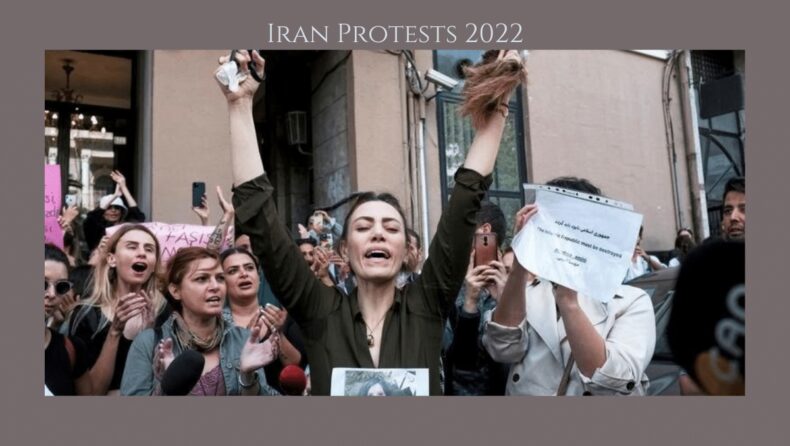Protests in Iran have continued to persist for over a month, killing at least 185 people. The protests for women’s rights continue to prevail despite the violence as fresh international sanctions against Iran are imposed.
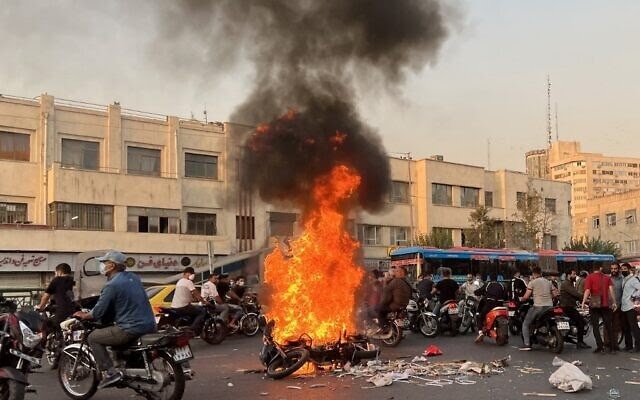
Iran Protests: Tracing the outset of massive anti-government protests in Iran
Mahsa Amini, 22 year old Kurdish woman who was killed after being detained by morality police in Tehran on September 13 for allegedly disobeying Iran’s severe laws mandating women to cover their head with a hijab, or headscarf, was the catalyst for the widespread protests that have unsettled Iran.
According to many stories, the police hit her over the head with a stick. A Different explanation was given by the authorities, who asserted that she had a heart attack. Authorities produced video showing Ms. Amini collapsing inside a police station to substantiate their claim, but the video and pictures of her in a coma infuriated ordinary Iranians.
After Ms. Amini’s funeral, women in the western area of Saqqez pulled away their headscarves in support of the protests.
Since then, protests have persisted for over a month, unsettling the entire nation as resentment against the government grows. As per Iran Human Rights, a nongovernmental organisation located in Norway, since the protests began on September 17, security forces have killed at least 185 individuals, including 19 children.
Iran Protests: Women continue to fight for their rights amidst the rising state-violence

“We don’t have one leader. The beauty and strength of our movement is that every single one of us here is a leader.”
Golshan, a women’s rights activist in Iran.
The streets of Iran have flamboyantly reverberated “woman, life, freedom” as women march courageously in the streets; openly dissenting and expressing defiance against Iran’s repressive regime.
Mahsa Amini has come to represent the millions of Iranian women whose livelihoods are morally policed and restricted by harsh regulations that deny them their individual freedom. Since then, women have taken the lead in the protests and have flooded the streets with large-scale gatherings that have exposed them to cutting their hair and burning their hijabs in public.
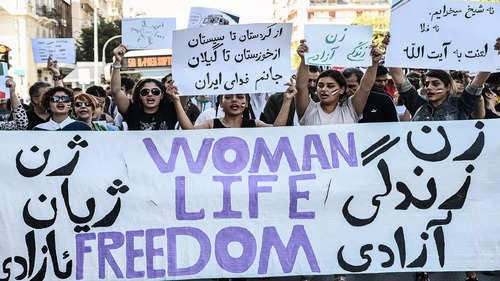
The situation of women in Iran has been miserable, as they are subjected to constant moral policing, have little to no autonomy, and suffer from the imposition of social and religious constraints as well as infringement of their fundamental rights by the regime. This injustice endured by women and girls in Iran, where the government strictly controls women’s bodies and freedom has incited outrage to protest to protect their fundamental rights.
https://www.hrw.org/news/2022/10/05/iran-security-forces-fire-kill-protesters
Iranian women have been coerced to wear the hijab since the 1979 revolution. Ever since then, the dialogue around women’s rights and liberties has subsided in the background and their rights went on to diminish. Under the continual state repression and surveillance, women’s voices have been silenced, as collaborative politics of social and religious restrictions have for too long marginalised the dissenting voices.
Women’s rights and bodies have been contested sites where these politics have invisibilized women, stripping them of their liberties and violating their fundamental rights.
Even though protests against social and political repression throughout the Islamic Republic have been taking place in the streets, a sense of pessimism was already there due to the situation of the economy which heightened the crisis.
Iran’s economy began to deteriorate after severe sanctions were put in place by foreign countries in an attempt to pressure Iran’s government to restrict its nuclear programme.
https://twitter.com/KhosroKalbasi/status/1579800628825845762/photo/1?ref_src=twsrc%5Etfw%7Ctwcamp%5Etweetembed%7Ctwterm%5E1579800628825845762%7Ctwgr%5E7044d992c9279b750076571672b2ab444e365918%7Ctwcon%5Es1_&ref_url=https%3A%2F%2Fwww.bbc.com%2Fnews%2Fworld-middle-east-63218963
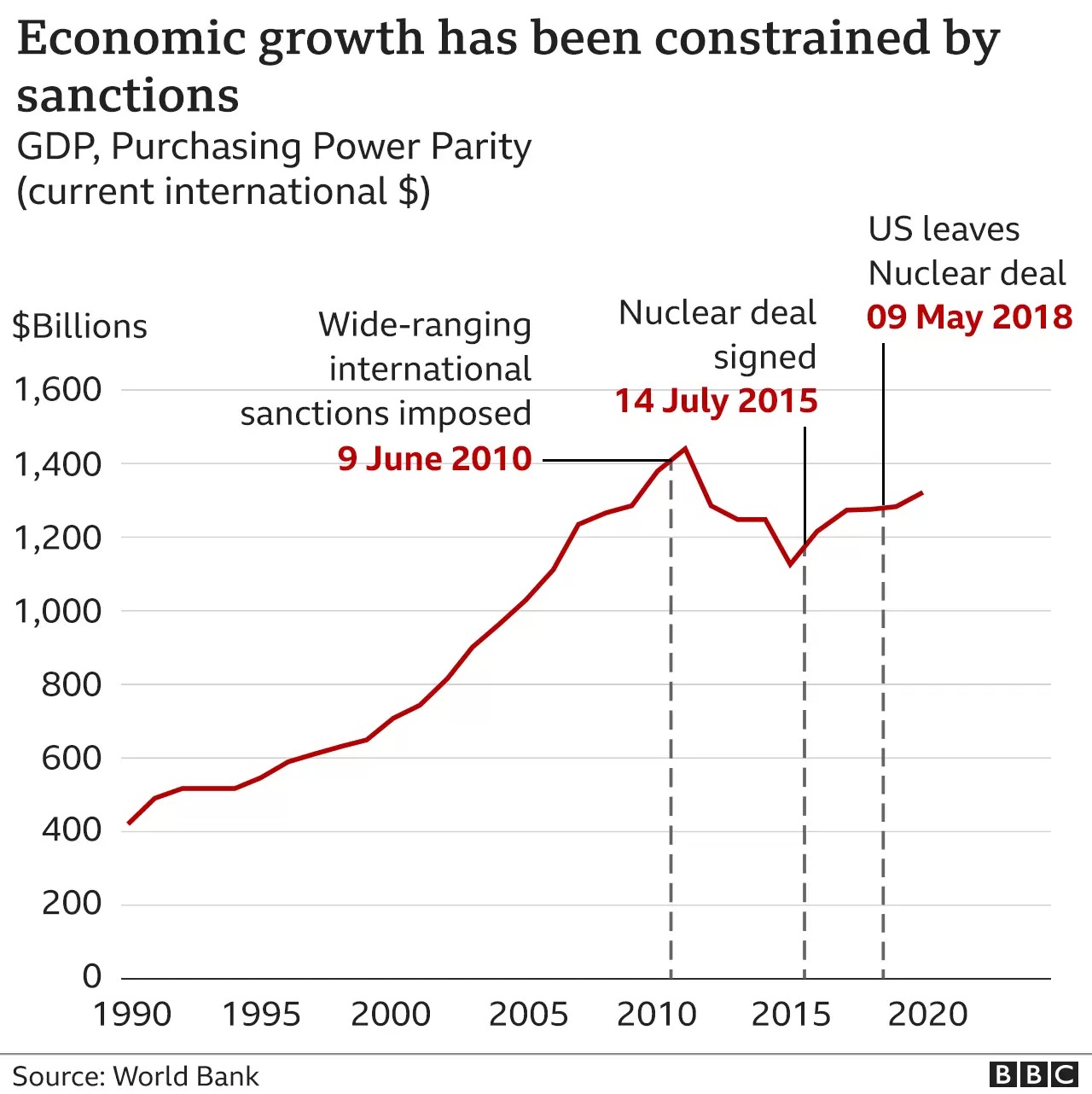
Iranian economic growth has been marginal over the previous ten years as a result of sanctions, economic mismanagement, and corruption. Additionally, according to certain assessments, it is currently 4-8% weaker than it was in 2010.
Double-digit soaring inflation has plagued the country, with prices of common commodities rising to 1,135% over the last ten years. The value of the rial, the currency of Iran, has decreased by over 90% during the last five years. Most of the fall happened after President Donald Trump’s surprise decision to pull the United States out of the Iran nuclear deal, imposed harsh sanctions on Iran’s primary source of foreign revenue, and severely constrained its access to the international banking system.
All of these factors have coalesced to result in an incessant decline in living conditions. The economic reasons for skyrocketing inflation, declining currency value, mismanagement of the economy, and grim future have unnerved the Iranians for an extended period and are now fueling the protests in Iran.
In order to keep the protesters under control, the Iranian police and security services have employed violent crackdowns, severe force, internet suspension, arbitrary arrests and restriction on press and extensively violated human rights.
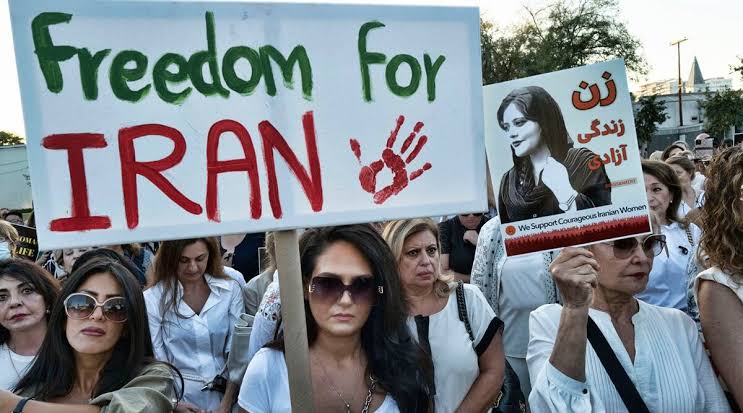
The initial protest against Amini’s unjust killing and the repressive government regime has evolved into a protest for millions of Iranians to reclaim their fundamental dignity and human rights that have been repressed for so long. These protests have a deeper underlying cause– worsening economic conditions due to international sanctions, disregarding women’s rights and a record of violence against resistance. These three-fold social, economic and political facets reinforce the anti-government protests in Iran that have now rebelled to destabilise Ayatollah Khameini’s regime.
Iran Protests: Sanction, solidarity and the global response

Strong responses to Mahsa Amini’s seath as well as the crackdown have come from the US and other Western nations, leading to further penalties on Iranian officials and escalating concerns at a time when efforts to restore the 2015 nuclear deal are at a standstill.
Iranian police forces have been illegally detaining activists, journalists, and anybody else protesting against the government in an effort to quell the unrest. On Wednesday, member nations of the European Union decided to implement fresh sanctions against Iran.
In response to Iran’s violent repression of protests, Britain has ordered sanctions against Iran’s morality police in its totality, as well as its national leader and the chief of its Tehran division.Similar measures have already been taken by the US and will soon be taken by the EU.
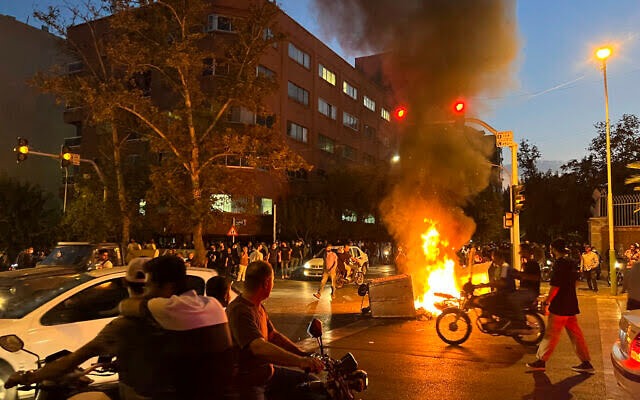
On Thursday, Canada placed fresh sanctions on Iran in reaction to the government’s violations of human rights and destabilizing conduct.
International solidarity has bolstered the protests in Iran, with international governments and organisations criticizing the Iranian government’s violent conduct toward the protester. As a peaceful intervention and an effort to support the fight for human rights, are these sanctions aimed against the authorities sufficient?
As more and more people join the protests, the subdued anger against the Iranian government’s state repression and injustice continue to rise. The protests now propelled by exacerbating economic, political and social conditions is the fight of thousands of people in Iran to protect their fundamental rights. Confronted by violence, batons, bullets, crackdown, or repression, these courageous Iranians standing tall in front of a towering regime are writing a history of resistance that will be remembered.







